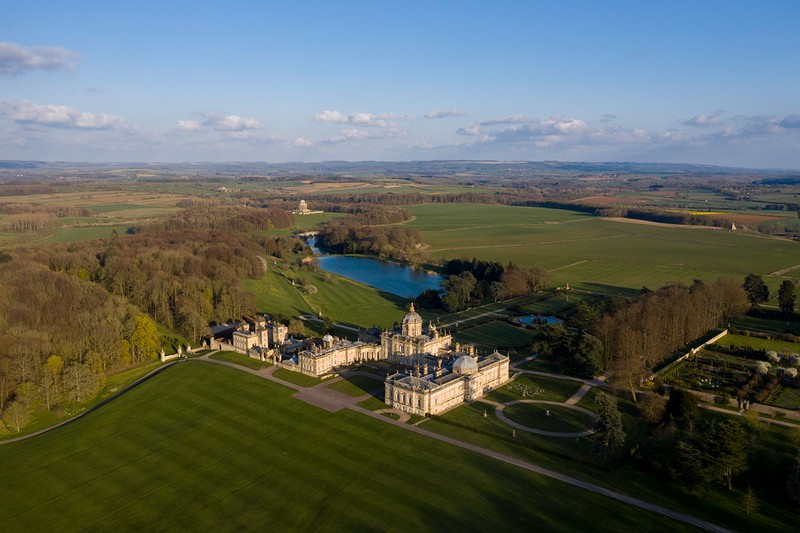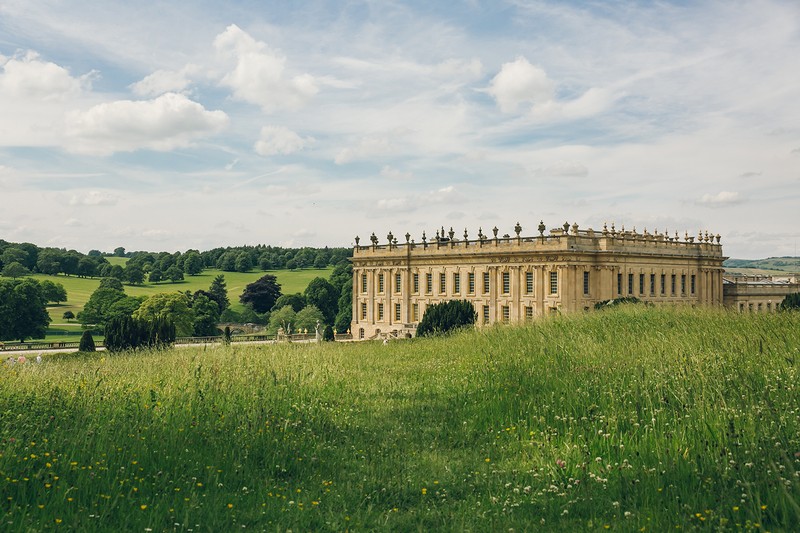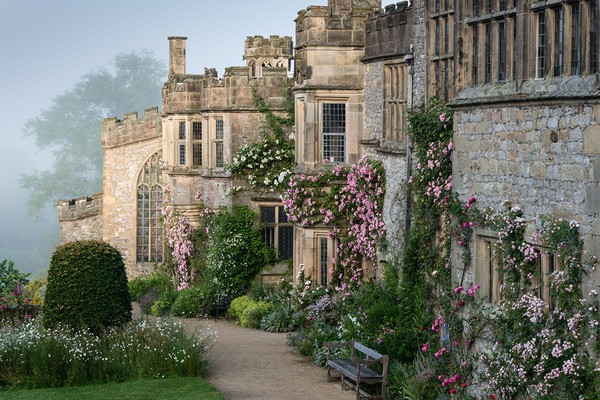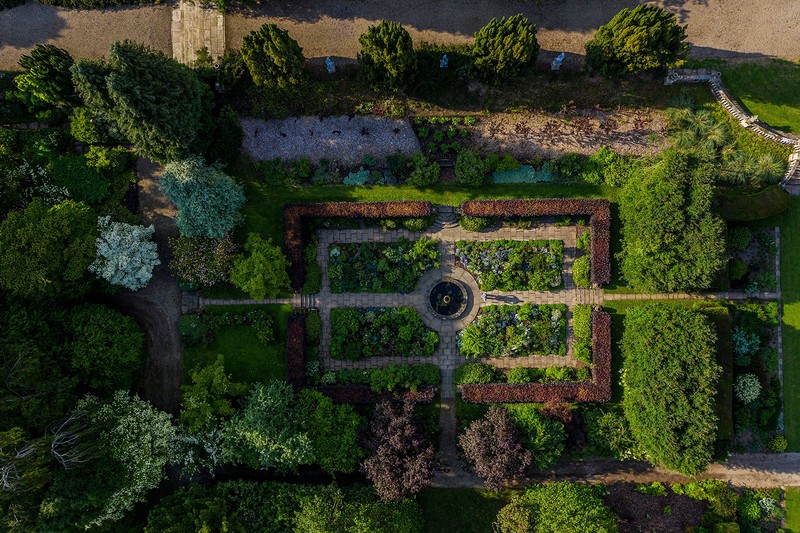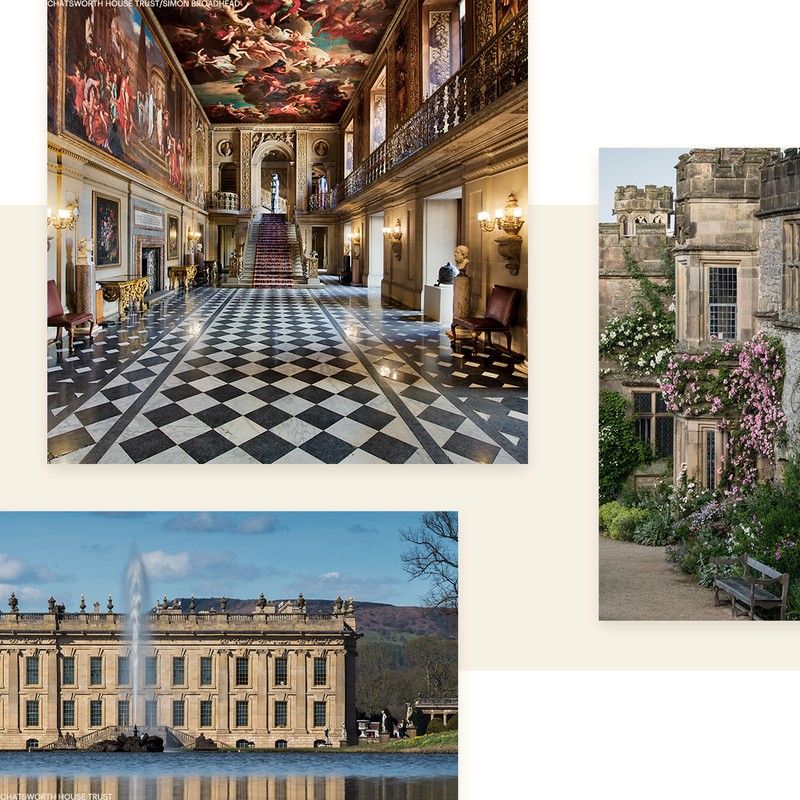
Stately Homes & Manor Houses To Visit In The North Of England
Alnwick Castle
Where: Alnwick, just off the A1 in Northumberland.
Why: Home to the Percy family (the Dukes of Northumberland), Alnwick Castle has over 950 years of history to discover, dating back to the Norman period. It is the second largest inhabited castle in Britain and, over the years, has also served as a military outpost, a teaching college, a refuge for evacuees and a film set. “The rugged exterior (Hogwarts in the first two Harry Potter films) disguises the Victorian interiors which really make it feel like a family home,” says Blue Badge Tourist Guide Viv Haxby. “And don’t miss the gardens, which include the world’s biggest treehouse, as well as the famous Poison Garden where (behind black iron gates and on a guided tour only) you can see over a hundred toxic and narcotic plants,” she adds.
How: Click here for information.
Castle Howard
Where: 15 miles northeast of York, just off the A64.
Why: Although building work began in 1699, the construction of Castle Howard took over 100 years to complete, spanning the lifetimes of three Earls. The Howard family still live here today. “A mixture of Palladian and Baroque, the castle is situated in the wilds of North Yorkshire and is best known as the fictional home of Sebastian Flyte in the TV adaption of Evelyn Waugh’s Brideshead Revisited,” says Viv, who told us that Bridgerton devotees will also recognise it as the fictional Clyvedon Castle, home of the dashing Duke of Hastings. Many of the 145 rooms can be visited, and other highlights include the spectacular grounds, the ornamental vegetable garden and the impressive fountains.
How: Click here for information.
Chatsworth
Where: Bakewell, Derbyshire.
Why: The seat of the Duke of Devonshire and home to the Cavendish family since 1549, Chatsworth sits in the heart of the Peak District, and is the estate that gilds Viv’s dreams: “This is a Baroque stunner and home to a rich and complete art collection. Every generation of the family has collected contemporary art, so you’ll see works by Tintoretto and Rembrandt next to ceramics by Edmund de Waal and conceptual artwork by Michael Craig Martin,” she told us. She also advises to allow plenty of time for the gardens – you’ll find extensive kitchen gardens, a rose garden, water features, a pinetum, a maze, a gigantic rockery, glasshouses and a delightful cottage garden.
How: Click here for information.
Haddon Hall
Where: Bakewell, Derbyshire.
Why: Dating back to the 12th century, this perfectly preserved medieval manor house – known as the ‘sleeping beauty house’ – was acquired through marriage by the Manners family in 1563 and is still home to Lord Edward Manners, younger brother of the Duke of Rutland. It is believed to be one of the most important historic houses in England and is held in such esteem because it was left under lock and key by its owners for more than 200 years (from 1720 to 1920) and, as a result, the interiors dating from the 14th century until the early Elizabethan period were left untouched. “The kitchens are a real treat and preserved much as they would have been 500 years ago,” says Viv. “The chapel has wall paintings dating from the 15th century and a heart-breaking monument to a Lord Haddon, aged 9, designed by his mother Violet, Duchess of Rutland,” she adds.
How: Click here for information.
Harewood House
Where: Harewood, between Leeds and Harrogate, Yorkshire.
Why: When Edwin Lascelles (the Earl of Harewood) started building this house in 1759, he wanted nothing but the best for his new home. He employed the finest craftsmen of the time, including architect John Carr, fashionable interior designer Robert Adam, England’s greatest furniture maker, Thomas Chippendale, and visionary landscape gardener Lancelot ‘Capability’ Brown. As you walk round the house, you can see Renaissance masterpieces, exquisite family portraits by Reynolds, Gainsborough, Lawrence and Richmond, as well as a fine collection of Sèvres china. “Harewood was the marital home of the Queen’s paternal aunt, Princess Mary, and the current Earl is cousin once removed of the Queen. Princess Mary was a much-loved chatelaine and you get a real sense of her as you walk around,” Viv says. The Lascelles have Trevor Nicholson as their head gardener who looks after the stunning gardens – they are shortlisted for this year’s Christie’s Garden of the Year Award.
How: Click here for information.
Kedleston
Where: Kedleston, Derbyshire.
Why: “Nobody would describe this house as homely,” Viv tell us. Indeed, Kedleston Hall was built for Sir Nathaniel Curzon in 1765 as a house to rival Chatsworth and as 'a temple of the arts'. “The main house was never meant to be a family home, but a show palace to showcase the finest paintings, sculpture and furniture. There are two pavilions on either side of a central block – one was always intended as the family accommodation, while the central section was for grand scale entertainment,” Viv continues. Although owned by the National Trust, the Curzon family still live in one of the pavilions.
How: Click here for information.
Newby Hall
Where: Skelton-on-Ure, North Yorkshire.
Why: Built in the 1690s by Sir Christopher Wren for the Compton family (Richard Compton and his wife still live here today), Newby Hall was later enlarged and adapted by John Carr, and subsequently by Robert Adam. The house is an exceptional example of 18th century interior decoration and, as Viv told us: “It is pretty rather than grand and a very manageable stately home to visit.” The gardens are award-winning and home to a collection of rare shrubs, spread across 14 expansive plots, or ‘garden rooms’. The horticultural team also look after two orchards, 40 acres of woodland and one of the longest double herbaceous borders in the country. If you happen to have little ones with you, don’t miss the Bear House, home to Gyles Brandeth’s teddy bear collection which has been lovingly collected by him and his wife Michele over several years.
How: Click here for information.
Nostell Priory
Where: Nostell, near Crofton, which is close to Wakefield, West Yorkshire.
Why: The name Nostell Priory refers to an Augustinian priory founded on the site in the early 12th century, dedicated to St Oswald (an Anglo-Saxon King of Northumbria). After flourishing for over 400 years, the priory was surrendered to Henry VIII in 1540 during the Dissolution of the Monasteries. Built on the site of the priory, Nostell is an 18th-century country house and has been the home of the Winn family for over 300 years, though it is now in the care of the National Trust. “This is a Palladian treasure house where you’ll discover rooms designed by James Paine, Robert Adam and Thomas Chippendale,” says Viv. The famous collection of Chippendale furniture has a claim to being the largest fully documented collection in the world.
How: Click here for information.
Renishaw Hall
Where: Renishaw, in the parish of Eckington, Derbyshire.
Why: Home of the Sitwell family (think the famous literary trio of Edith, Osbert and Sacheverell) for 400 years, Viv describes Renishaw as “a house of character with a joyous garden”. Today, it is still very much a family home to Alexandra Hayward (née Sitwell) and her family. “The house echoes with past generations and is a cocktail of eccentricity, charm and comfort”, Viv tells us. “One of the first things you see as you enter the house is a 17th-century carved and painted wooden figure wearing a pair of spectacles, which were left in the house in 1969 by a visitor. Sir Reresby Sitwell put them on the figure hoping that, if the visitor returned, he would retrieve them. The glasses are still here today and this quirkiness sums up the house,” adds Viv.
How: This property remains closed but is expected to reopen in August 2021. It can be viewed by guided tour only – click here for information.
Wentworth Woodhouse
Where: Wentworth, Rotherham, South Yorkshire.
Why: Wentworth Woodhouse is considered one of the finest and grandest Georgian houses in England and has the longest frontage of any private house. It was built in the first half of the 18th century for Thomas Wentworth, later Marquess of Rockinham, and comprises the unusual combination of two back-to-back houses: the West Front is built of brick in the English Baroque style, whilst the East is in sandstone and is a Palladian masterpiece. Viv recounts that “this house was so vast that, in its heyday, weekend guests were issued on arrival with caskets containing coloured confetti which they could sprinkle in their path as they moved around so they could always find their way back to their bedrooms.” The subject of a mammoth ongoing restoration project, you come here to marvel at the house’s enormity and wonder at the lifestyle of the family who lived here until the 1950s. “But don’t expect any works of art – the rooms are cavernous and largely bare,” says Viv.
How: Click here for information.
Viv Haxby is a Blue Badge Tourist Guide, a driver guide and a member of the Institute of Tourist Guiding.
PLEASE NOTE: To adhere to current government guidelines relating to Covid-19, most of the above properties have implemented safety measures and require all visitors to book timed tickets online. Visit their websites for full details.
DISCLAIMER: We endeavour to always credit the correct original source of every image we use. If you think a credit may be incorrect, please contact us at info@sheerluxe.com.
